View in other NatureServe Network Field Guides
NatureServe
Montana
Utah
Wyoming
Idaho
Wisconsin
British Columbia
South Carolina
Yukon
California
New York
Tapered Rush - Juncus acuminatus
State Rank Reason (see State Rank above)
Rare in Montana. Only known in the state from one wetland site in Teton County.
General Description
Short-rhizomatous, caespitose. Stems erect, terete, 40–80 cm, tufted. Leaves basal and cauline; blades subterete, 1–2 mm wide; auricles rounded. Inflorescence open with erect branches and clusters of 10 to 20+ flowers ca. 1 cm across; main bract shorter than the inflorescence. Flowers: prophylls absent; tepals green to light brown, 2–4 mm long, acuminate; stamens 3. Capsules 2–4 mm long, slightly exserted, tapering to the beak; seeds apiculate (
Lesica et al. 2012. Manual of Montana Vascular Plants. BRIT Press. Fort Worth, TX).
Phenology
Mature fruit in late July.
Diagnostic Characteristics
The septate leaves and flowers subtended by a single bract and having only 3 stamens separate J. acuminatus from our other non-rhizomatous rushes. Juncus is a large and difficult genus to distinguish, so a technical key should be consulted. Mature fruit is necessary for positive determination.
Species Range
Montana Range
Range Descriptions
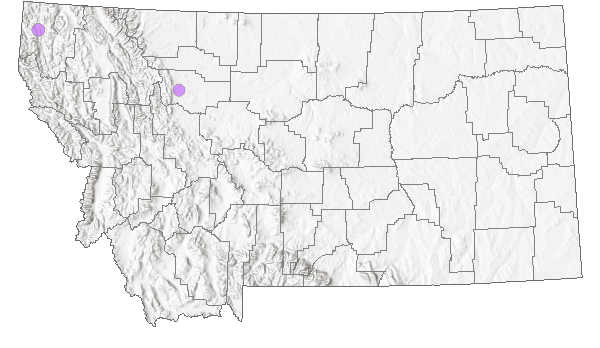
 Native
Native
Range Comments
BC to NS south to most of U.S., Mexico, S. America, rare on the Great Plains. One collection from Teton County (Lesica et al. 2012. Manual of Montana Vascular Plants. BRIT Press. Fort Worth, TX).
Observations in Montana Natural Heritage Program Database
Number of Observations: 3
(Click on the following maps and charts to see full sized version)
Map Help and Descriptions
Relative Density
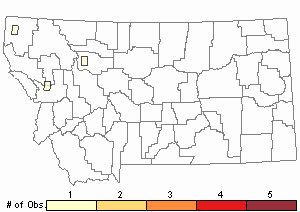
Recency
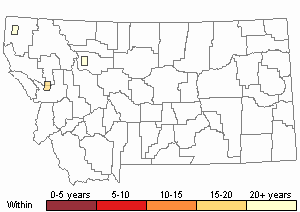

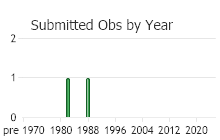
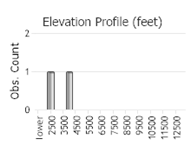 (Observations spanning multiple months or years are excluded from time charts)
(Observations spanning multiple months or years are excluded from time charts)
Habitat
Wet soil on the margins of ponds and marshes in the valley zone and on the plains.
Ecological Systems Associated with this Species
Stewardship Responsibility
References
- Literature Cited AboveLegend:
 View Online Publication
View Online Publication Lesica, P., M.T. Lavin, and P.F. Stickney. 2012. Manual of Montana Vascular Plants. Fort Worth, TX: BRIT Press. viii + 771 p.
Lesica, P., M.T. Lavin, and P.F. Stickney. 2012. Manual of Montana Vascular Plants. Fort Worth, TX: BRIT Press. viii + 771 p.
- Additional ReferencesLegend:
 View Online Publication
View Online Publication
Do you know of a citation we're missing? Hermann, F.J. 1975. Manual of the rushes (Juncus spp.) of the Rocky Mountains and Colorado basin. U.S. Forest Service, General Technical Report RM-18.
Hermann, F.J. 1975. Manual of the rushes (Juncus spp.) of the Rocky Mountains and Colorado basin. U.S. Forest Service, General Technical Report RM-18. Lesica, P. 1991. The Rare Vascular Plants of Pine Butte Swamp Preserve. Unpublished Report to the Nature Conservancy. 15 Pp.
Lesica, P. 1991. The Rare Vascular Plants of Pine Butte Swamp Preserve. Unpublished Report to the Nature Conservancy. 15 Pp. Lesica, P., M.T. Lavin, and P.F. Stickney. 2022. Manual of Montana Vascular Plants, Second Edition. Fort Worth, TX: BRIT Press. viii + 779 p.
Lesica, P., M.T. Lavin, and P.F. Stickney. 2022. Manual of Montana Vascular Plants, Second Edition. Fort Worth, TX: BRIT Press. viii + 779 p.
- Web Search Engines for Articles on "Tapered Rush"





